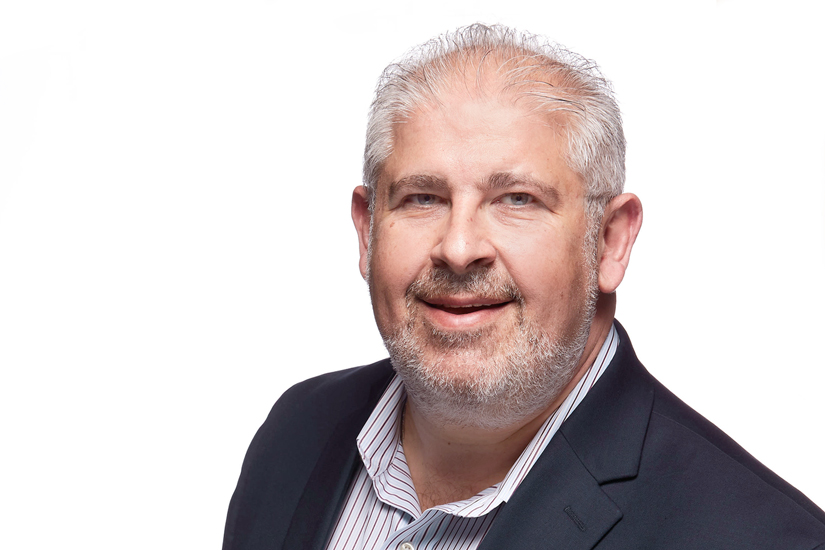|
Getting your Trinity Audio player ready...
|
ePlus Technology didn’t become a $2.2 billion business by one-offing its extensive list of IT partners across all verticals. The IT integrator is precisely where it is because of its commitment to engaging customers in an ongoing and collaborative IT journey rooted in what those customers actually need, not what they can be sold. That seems no clearer than in ePlus’ healthcare division.
Vice President of Healthcare George Pashardis and Healthcare Chief Technology Officer Ken Puffer have united visions when it comes to the approach of their healthcare and health system clients. “We don’t just want to sell a product and walk away from it,” Puffer says. “I think healthcare organizations that work with us recognize the difference in how we work with them and place emphasis on their success and partnership. We have an investment in our customer base that we truly view as a partnership.”

Shifting Priorities on a Dime
The focus on relationship cultivation is made most evident by the COVID-19 pandemic and in the pivot of so many of ePlus’ healthcare clients that haven’t sought to end the partnership; instead, they’ve required it to evolve in new ways. And that, says Pashardis—who’s been with ePlus for more than twenty years—is where the company is most effective.
“We’ve told our account executives across the country that you must make yourself relevant and get to understand your customer’s IT strategy because it will change,” the VP says. “Especially now, IT spends have shifted priorities dramatically, and it’s our job to understand how we can be of value and make their lives easier.”
While healthcare had been one of the slower adopters of cloud-based integration due to the exponentially complex relationship between physicians, patients, electronic medical records, and information security, ePlus’ healthcare division has seen those needs ratchet up almost overnight due to the pandemic.
“We don’t just want to sell a product and walk away from it. . . . We have an investment in our customer base that we truly view as a partnership.” —Ken Puffer
“Services like telehealth go back five years or so, and it seemed like something everyone wanted to invest in,” Pashardis says. “But the reimbursement models really didn’t support it. Now, you’re looking at hospitals who were maybe doing between twenty-five and fifty of these virtual visits a day suddenly needing to do a couple thousand.”
That’s not just about technological needs, which Pashardis says are relatively easy to account for. It’s the manpower. “In some cases, you’re moving from training five people to maybe fifty to support all of this technology,” Puffer says. “It’s going to be interesting to see as patients become more accepting of telemedicine just what happens when patients are asked to start going back on-site and what kind of adaptation is required.”
Helping customers navigate the funds made available for different reimbursement programs is also a priority at ePlus. “Some of our customers wouldn’t be able to really grow their telehealth and telemedicine programs without these grants and funds,” Pashardis says. “And not every organization has a grants team that’s aware of all of the viable options. Let’s face it: hospitals aren’t doing well financially right now, and we need to do what we can to help them move forward.”

Investing vs. Insisting
Pashardis and Puffer mention the same idea in a few different ways during their interview. It boils down to the need for a company like ePlus to be an advocate, not a salesman, for its partners and customers. “I think what sets us apart is the connection we have with our organizations,” Puffer says. “You have to be an active listener and work through what’s really going to serve their best interests. It’s more than just providing them what we think they need: it’s listening, taking their feedback, and building off of it to put together solutions that are going to be effective.”
“I think cloud integration is a good example of that,” Pashardis chimes in. “It just wasn’t a priority for our customers for a number of reasons, but once COVID hit, we’ve really put our efforts into seventh gear as those kinds of technologies have become essential in a very short period of time.” These weren’t solutions ePlus had to create overnight, they were ready and awaiting deployment for when customers decided it was time.
“People are out there on the frontlines doing amazing things, and it’s important for us to find different ways of letting them know how much we appreciate their heroic efforts.” —George Pashardis
And this time has been, for better or worse, unlike any other. For the healthcare division, data security—already a top consideration—somehow keeps expanding in importance. Pashardis explains how cyberattacks have increased exponentially since the beginning of 2020, noting that “security continues to be our number one priority for our customers.”
Puffer agrees and takes a wider look at what the pandemic means for ePlus’ customers, now as well as in the future. “I think COVID has really caused some of our healthcare customers to rethink how they’re operating internally,” Puffer says. “Organizations are looking at how much of their current knowledge can be leveraged and how much they need to learn. We’re here to help make them successful.”
Pashardis says maintaining relationships with partners is also about more than IT needs. “Sometimes it’s as simple as buying lunch for our heroes in healthcare,” the VP says. “People are out there on the frontlines doing amazing things, and it’s important for us to find different ways of letting them know how much we appreciate their heroic efforts. We’re invested in our customers, and we want them to feel it.”
